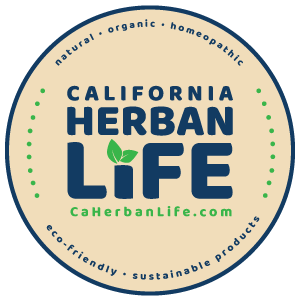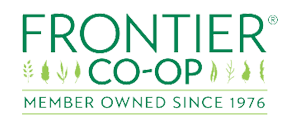What is Green Cleaning?
For some, green cleaning means that they only use substances like baking soda, vinegar, and lemons to clean the home surfaces. These are considered to be natural green cleaners. Some households may seek out manufactured green cleaning products that are healthy for the environment (some are green brands). Green cleaning products typically have the following characteristics:
- No phosphates
- No chlorine
- No artificial fragrances
- No artificial colors
- Biodegradable or recyclable packaging
- Organically grown ingredients using sustainable farming practices
Some green cleaning products may certify that their items are fair trade, meaning that the product meets certain environmental and labor standards by those who produced it. Other green cleaning products may not be free of additives or harmful chemicals—but they may donate a portion of their profits to environmental causes.
How “Green” Are Green Cleaners?
To tell if a product is green, read the label. Not that different labeling programs classify cleaning products. The United States Environmental Protection Agency’s (EPA) Design for the Environment program mandates that labels are put on products that meet EPA’s criteria for chemicals. These products display the Design for the Environment (DfE) label. Others that are labeled as “low VOC” or “no VOC” means they have a lower concentration of volatile organic compounds (VOCs) or none at all.
- Labels with vague terms such as “environmentally friendly” and “non-toxic” are not regulated and potentially misleading which means that some green products may still have unhealthy ingredients in them.
- When it comes to effectively killing germs and stopping the spread of infection, for example, it is vital to have a product that cleans and disinfects. However, some people who turn to the EPA-registered disinfectant list, for example, may be wary of some green cleaners not on the list, and instead stick to trusted favorites such as bleach.
- Green cleaning items have also faced a backlash because they can cost more than traditional cleaning products.
The American Cleaning Institute is vocal when it comes to educating people about which chemicals are in cleaning agents―and other groups have come out stating which substances to avoid. The EPA also keeps an easily accessible database of greener cleaning products in its Safer Choice program.
Whatever choices you make about your cleaning supplies and practices, there is a huge variety of environmentally friendly choices for green cleaning. With a little research, you may be able to green up your household cleaning routine to create a healthier, safer environment.
Understanding Labels
Many companies who have a “green” line of cleaners will be much more specific about what is in their product. Often companies are better at listing what isn’t in their product. No phosphorous, no CFCs, and no bleach are popular things to tout on a label. But if you want to know the specifics, you often have to go through customer service to get answers.
Why You Want to Know About Cleaning Ingredients
Mixing certain chemicals together can be dangerous. Family members may have an intolerance to certain chemicals, dyes, or fragrances. Most consumers want to know exactly what they are wiping, spraying, or spreading around their homes.
What the Label Will Say
The way to use most cleaning products can seem self-explanatory. You spray, polish, scrub…But in reality, the directions usually give a little more information that can be useful. Most directions will include the surfaces that the product can be used on, and the ones it shouldn’t be used on. Before you ruin your surfaces, check to be sure that the product is made for that job.
The directions will also often give hints on how to make the product most effective. How long do you leave it on the surface? What do you use to clean it off? Is rinsing necessary? Most cleaning products also give the warning to try the product in a hidden spot first, to make sure that the cleaner doesn’t damage the surface.
Why You Want to Know
You want to be sure that the surface you are cleaning is compatible with the cleaner you are using.
For best results, always follow the directions on the label. It can save a lot of time and effort.
Cautions:
What the Label Will Say
Most cleaning products add a caution section to their label. It’s often in large print and in bold. Most caution warnings will say if the product is an eye irritant, a skin irritant, harmful if swallowed, has contents under pressure, or needs to be used in a well-ventilated area. Many companies will put a small caution section on the front of the cleaning product label, along with a more detailed list of cautions on the back label.
Why You Want to Know
If you have respiratory issues, you want to know before you open the bottle that the area will need to be well-ventilated.
After a cleaner has splashed in your eye, is not the time to search the bottle to find out if it is an eye irritant.
Know before you use a product what potential cautions it has.
First Aid:
What the Label Will Say
Sometimes the label will have a separate section labeled as first aid. Other times the caution section will have instructions for administering first aid if the product is ingested, is on the skin or is in the eyes. Many labels may tell you to call poison control. To streamline this process, think about writing the poison control number and storing it in an easily accessible location. One industrious mother I knew, wrote the poison control number on her cleaning products, just in case she ever needed it quickly.
Why You Want to Know
If there is ever an emergency, it will help to be familiar with the labels suggestions for first aid. While you may not have memorized the label, you will have a better idea of the first steps to take if you’ve read it before an emergency happens.
Storage:
What the Label Will Say
Many cleaning product labels only give storage information if there is a place your cleaning products should not be stored. Often products may say a temperature range for storage or specify that products not be stored next to a heat source. Almost all cleaning product labels will say to keep out of the reach of children.
Why You Want to Know
Dry powdered types of cleaners should be stored in dry areas. If they are stored in moist areas, the powder will clump together and become useless. Products that are under pressure should never be stored near a heat source in order to prevent bursting. If you want your cleaning products to last, store them in the recommended way.
Always keep cleaning products out of reach of children and pets. You may believe that your child or pet knows to stay away from cleaning supplies, but it is better to be safe now and avoid being sorry, later.
Disposal:
What the Label Will Say
Cleaning labels will say a wide variety of things for disposal. Some will tell a consumer only to “dispose properly” of the empty container. Others will ask consumers to rinse the container before disposing of it in the trash. Some labels may provide recycling information. Others may caution against reusing empty containers because of the lack of correct labeling, and/or risk of mixing chemicals.
Why You Want to Know
More and more products are trying to be kinder and gentler to our earth. If there is an easy way to recycle the container or make sure that it doesn’t harm anyone on its way out of our home, it becomes simple for us to do our part in protecting the environment.




